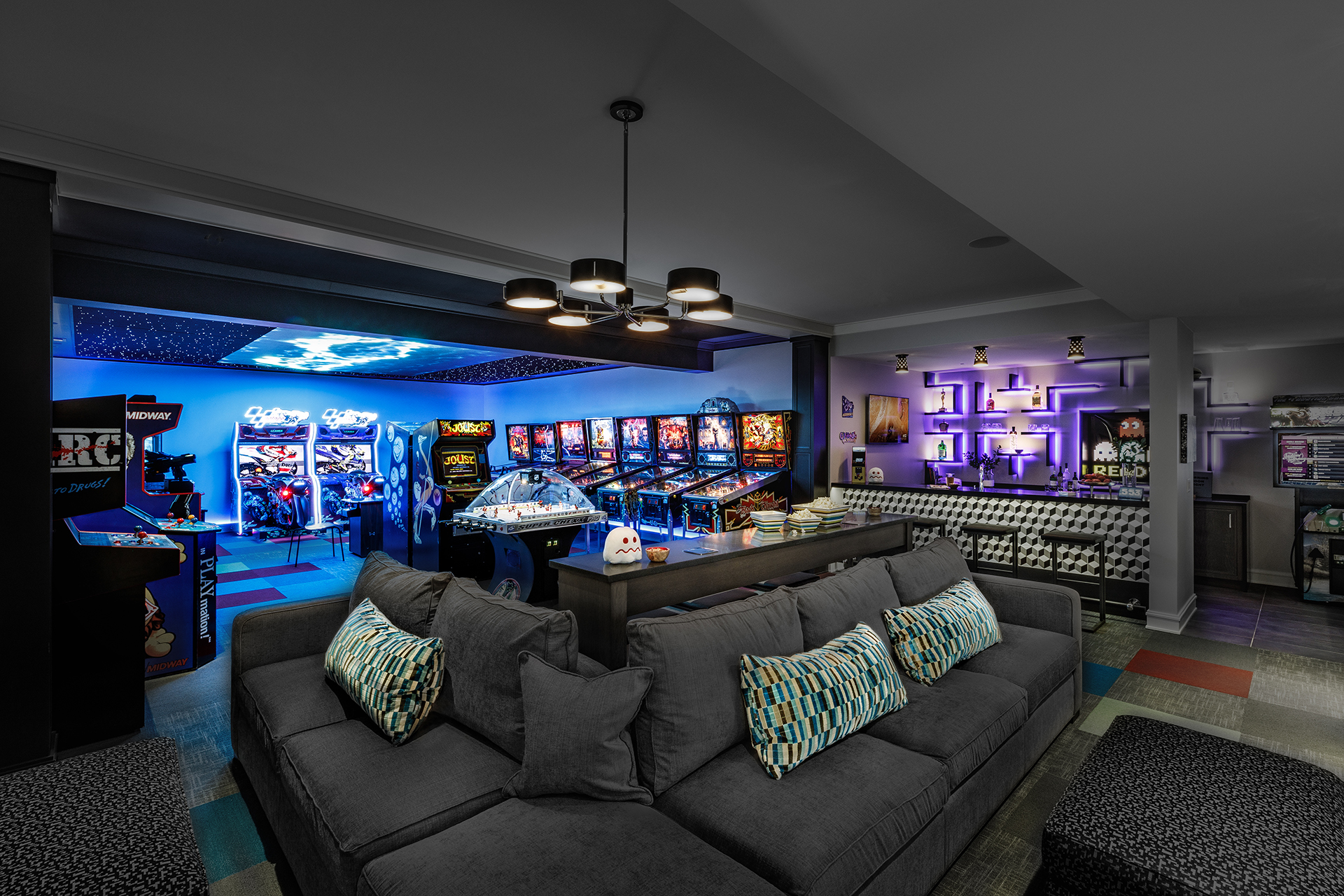
Space to Play: Design Your Perfect Gaming Room
January 13, 2022
Once the province of children and teenagers, the gaming room, or rather state-of-the-art fun zone, is now the new must-have for adults. Two-thirds of all American households include gamers, and their average age is 34 years, reports Statista, a provider of market and consumer data.
In an industry already worth $180bn and predicted to treble in the next seven years, according to Harvard Business Review, the investment in elevating gameplay to a memorable home experience has had an impact on every aspect of consumer living, from residential construction to specialist furniture and designer apparel.
While Dior, Gucci and Balenciaga forge partnerships with game designers in a market where adult female gamers outnumber teenage boys, builders are literally digging deep to accommodate householders who are keen to invest in a home-entertainment hideaway.
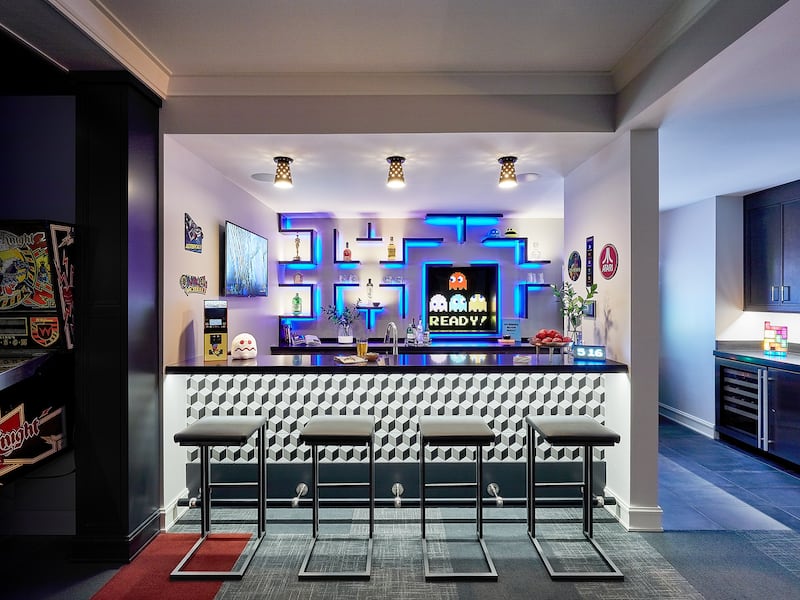
“Since COVID-19, the demand has grown immensely,” says Micheal Conneely, co-founder of Greenside Design Build in Willowbrook, Illinois. He reports digging ever deeper to accommodate luxurious subterranean caves complete with gaming rooms, whiskey bars, kitchenettes, and bathrooms.
“There has always been a demand . . . for recreational spaces, but now we are building multiple spaces in a single home—sports courts and golf simulators as well as gaming rooms,” he says. What’s new is that dedicated gaming spaces are now occupying two separate floors in the house. “We are designing homes with second-floor rooms for the kids to play video games or stream movies, while the adults have reclaimed the basement as their own.”
Paying homage to Pac-Man
Working closely with Greenside and other U.S. residential developers is interior designer Amy Storm, whose stylishly eye-popping gaming room for George Petro, head of a gaming company, was featured in Architectural Digest (see main image). It’s a basement gaming room that accommodates 20 arcade games, with bar shelving designed to pay homage to Pac-Man, and a Space Invaders-tiled bathroom.
Interestingly, the father of four commissioned the basement as a haven for himself and his wife to indulge the passions formed during his teen years at the point when his four children were moving out of home.
Storm is already well-known for designing home theaters and golf simulators, which, like gaming rooms, share the requirement for giant screens, state-of-the-art sound, and the interior design expertise needed to properly integrate the technology.
Related: Smart House, Healthy You: The Future of Wellness Technology
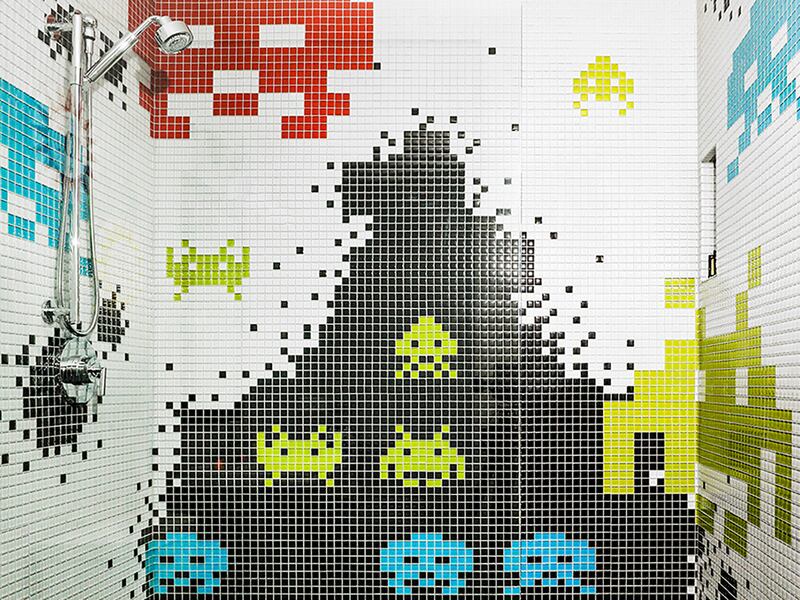
“We bring in AV specialists and lock in the location of all equipment at the outset, and take care of sound-absorption techniques, which go beyond panels and can even dictate the shape of the room, which is best when not perfectly square,” she says.
Clients are encouraged to choose their screen placement, given differing views within the gaming community on what makes the ultimate experience when entertaining visitors. “Some clients want one that fills a whole wall, while others prefer multiple screens installed on different walls so they can see each other’s play.”
Ensure you're sitting comfortably
When it comes to seating, it can be enhanced for long-haul comfort by audio-visual specialists like UK-based Custom Controls, whose bespoke gaming rooms can include chairs fitted with motorized seat backs, headrests, footrests, and chilled cup-holders. The experience can be further enhanced by chairs from specialist game-seating suppliers, which incorporate simulators and tilt with the action.
Six such chairs were flown in from the U.S. by interior designer Charu Gandhi—whose London-based Elicyon practice serves clients across the globe—and upholstered to match the rest of the seating in a room that also serves as a home cinema. “These chairs from Fortress, which had inbuilt controls and simulators, form the front row of a room, which has sofas in the second row and beds behind that,” she explains.
The importance of sound
Sound can be as important as motion in enhancing the gaming experience, according to Custom Controls, which installs Dolby, the 21st-century cinema standard, and adds ceiling speakers to their set-ups to amplify aerial gaming action, like helicopters flying overhead.
“Having an immersive audio system is huge for gamers, as most games now have multiple options for surround sound,” says Paul Bochner of New Jersey-based Electronic Concepts. The company works with smart home tech designer and manufacturer Savant, which reports increasing demand for gaming spaces and creates pre-sets to make activating a room kitted out with their integrated technology more user-friendly.
Related: Fitness Goals: How a Bespoke Home Gym Changes the Game
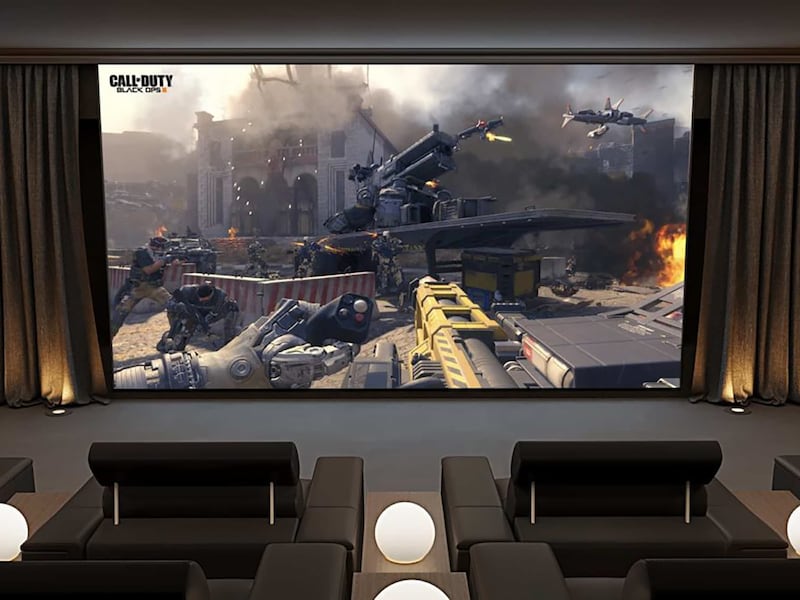
“A Savant Scene we call Game Time can be personalised to set audio, video, lighting, climate control, and activate other smart appliances to create the ideal gaming environment at the touch of a single button or voice command,” explains Angela Larson, senior VP of customer operations.
But while tech specialists control the equipment, it’s up to interior designers to house it elegantly, mitigate its disruption to non-participants in other living areas, and add home comforts, which increasingly include a themed bar, kitchen, bathroom, and functional furniture.
“Like a charging cupboard for wireless consoles, which I consider essential as a sound-absorption system, it will incorporate not only a gaming zone but a bowling lane, darts board, and dance floor—and a sushi counter!” says Gandhi, who is currently working on a 4,000 square-foot (372 sq m) lower floor dedicated entirely to home entertainment.
Smaller gatherings in safer spaces
While homeowners have reclaimed their basements to create elegant, luxurious spaces where they can entertain, they’re also playing games, designed to engage the whole family, with their children during the day.
It’s a trend that will only grow as the ongoing pandemic persuades increasing numbers to invest in making hunkering down at home more enjoyable. “It’s all about smaller gatherings in safer spaces,” says Storm, one of a handful of savvy interior designers who have identified playing at home as the new going out—a trend that seems set to run and run throughout 2022 and beyond.
On the Market
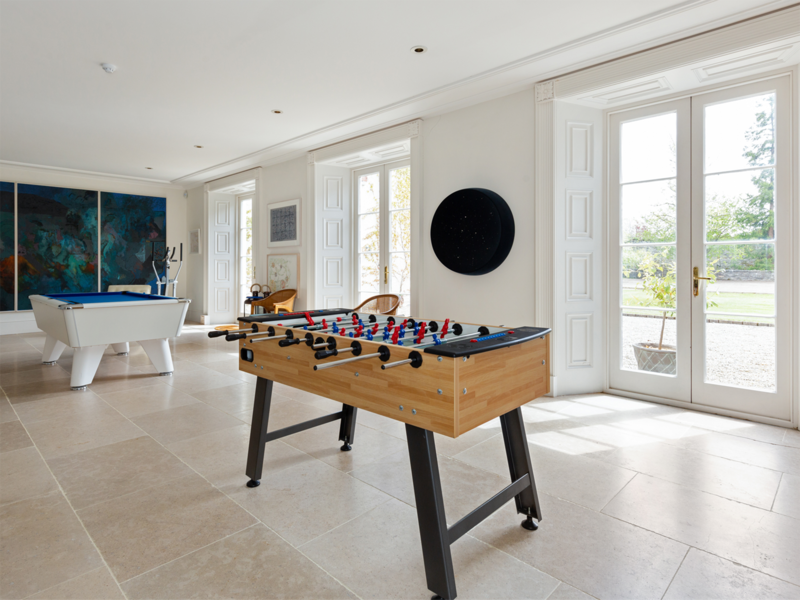 Opens in new window
Opens in new windowIreland's Kilmurry House—the birthplace of watercolorist Mildred Anne Butler, and her lifelong home—is an elegant five-bay, three-story limestone property set above a garden-level villa. The house dates back to 1690 but is now redesigned for 21st-century family living with a large games room opening onto a terrace, an indoor swimming pool, and a vast chef's kitchen. The estate stretches to 90 acres (36 ha), including a walled garden and a lake.
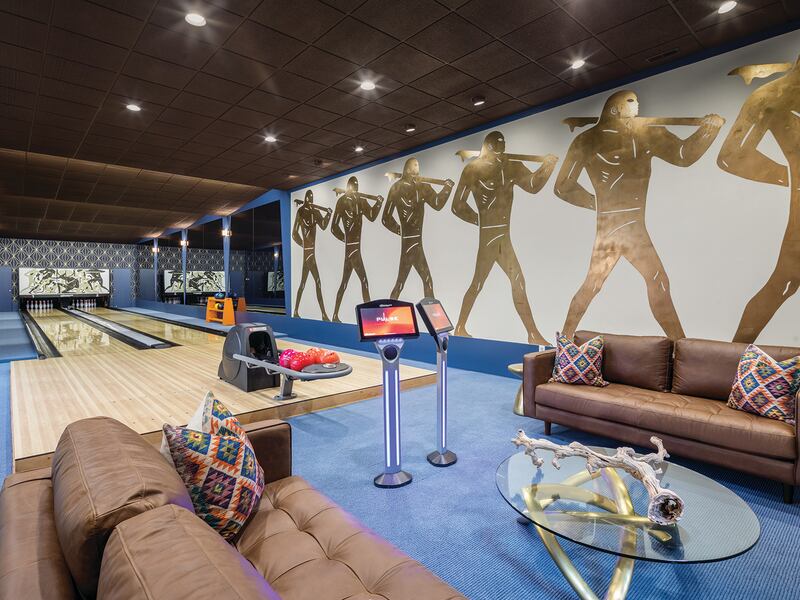 Opens in new window
Opens in new windowEast Hill Estate, New Jersey, located just five miles (8 km) from New York City, is a 32-room brick mansion featuring three wood-burning fireplaces, a gourmet kitchen, and an owners' suite with living room. The floors of the house are connected by two elevators—one in the north wing and one in the south. For recreation and entertainment, you are spoilt for choice. Relax in the home theater or try your hand at bowling in the two-lane automated bowling alley. There's also an indoor pavilion featuring a pool and spa, a professional recording studio with piano room, and an art gallery wing. Outside you’ll find grand patio spaces and manicured landscaping, and a two-story carriage house—ideal for guests and home to a gym and steam room.
Banner image: Gaming basement designed for George Petro by Amy Storm. Courtesy: Amy Storm & Company


